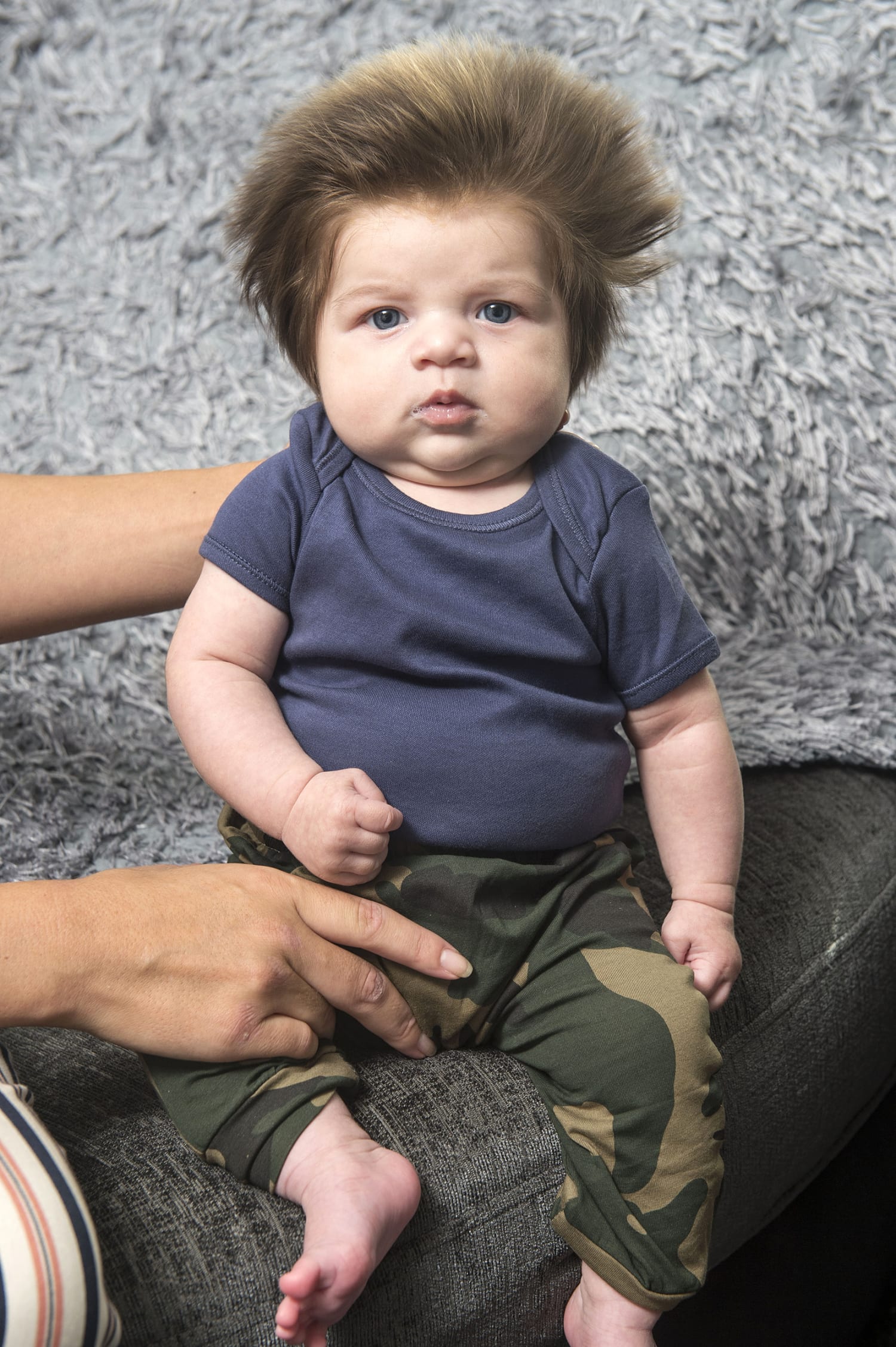
The Curious Case of Babies with Abundant Hair: A Comprehensive Exploration
Introduction
The birth of a baby is a momentous occasion, often accompanied by an array of emotions and expectations. While some parents eagerly anticipate the arrival of a cherubic infant with a delicate fuzz of hair, others are surprised and delighted by the sight of a newborn sporting a full head of luscious locks. This phenomenon, known as "hairy babies," has intrigued parents, scientists, and medical professionals alike. In this comprehensive article, we delve into the fascinating world of babies with abundant hair, exploring the causes, potential health implications, and cultural significance associated with this unique trait.
Causes of Hairy Babies
The development of hair in utero is a complex process influenced by a multitude of factors, including genetics, hormones, and environmental cues. In the case of babies with excessive hair, several potential causes have been identified:
-
Genetics: Hair growth is largely determined by genetics, and some individuals are simply predisposed to having more hair than others. This trait can be inherited from either parent or grandparents.
-
Hormonal Influences: During pregnancy, the mother’s hormones, particularly androgen levels, can affect the baby’s hair growth. High levels of androgens, which are typically associated with male fetuses, can stimulate hair follicle development and result in a hairy baby.
-
Environmental Factors: Certain environmental factors, such as exposure to certain chemicals or medications during pregnancy, have also been linked to increased hair growth in babies. However, the exact mechanisms behind this association are not fully understood.
Types of Hairy Babies
Babies with abundant hair can exhibit varying degrees of hairiness, ranging from a thick, full head of hair to more localized patches. Some of the most common types of hairy babies include:
-
Lanugo: This is a fine, downy hair that covers the entire body of most babies at birth. It typically sheds within a few weeks or months after birth.
-
Terminal Hair: This is the thicker, permanent hair that replaces lanugo. In hairy babies, terminal hair may be present on the head, eyebrows, and other areas of the body.
-
Hypertrichosis: This is a rare condition characterized by excessive hair growth all over the body. It can be caused by genetic mutations or hormonal imbalances.
Health Implications
While having a hairy baby is generally not a cause for concern, it is important to be aware of potential health implications. In some cases, excessive hair growth can be a sign of an underlying medical condition, such as:
-
Congenital Adrenal Hyperplasia (CAH): This is a hormonal disorder that can cause excessive hair growth in female babies.
-
Polycystic Ovary Syndrome (PCOS): This is a hormonal disorder that can affect women of all ages, including infants. It can lead to increased hair growth on the face, chest, and abdomen.
-
Cushing’s Syndrome: This is a condition caused by high levels of cortisol, which can result in excessive hair growth.
Cultural Significance
In many cultures, babies with abundant hair are considered a sign of good luck, health, and prosperity. In some Asian cultures, it is believed that hairy babies will grow up to be wealthy and successful. In other cultures, hairy babies are seen as a symbol of strength and virility.
Treatment Options
In most cases, hairy babies do not require any treatment. However, if the hair growth is excessive or causing discomfort, there are several treatment options available:
-
Laser Hair Removal: This is a permanent hair removal method that uses a laser to target and destroy hair follicles.
-
Electrolysis: This is another permanent hair removal method that involves inserting a fine needle into each hair follicle and delivering an electric current to destroy it.
-
Shaving or Trimming: These are temporary hair removal methods that can be used to reduce the appearance of excessive hair.
Conclusion
Babies with abundant hair are a fascinating and often endearing sight. While the causes of this phenomenon can vary, it is generally not a cause for concern. However, it is important to be aware of potential health implications and to seek medical advice if excessive hair growth is accompanied by other symptoms. In many cultures, hairy babies are considered a sign of good fortune and prosperity, adding to the unique charm and wonder of these special little individuals.
